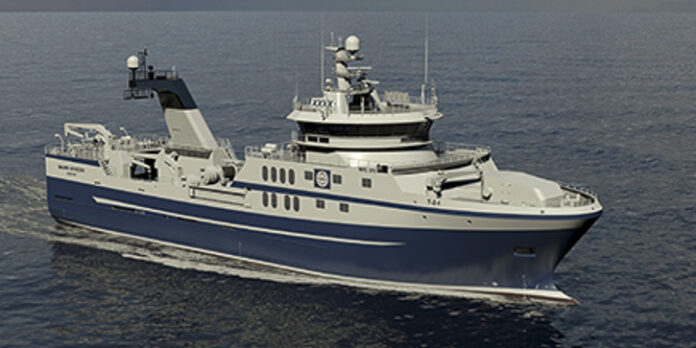Rolls-Royce has signed a contract to deliver ship design and an extensive range of equipment to a 70-metre long stern trawler to be built for Engenes fiskeriselskap AS, based in Troms county, northern Norway.
The Rolls Royce Marine-designed, DNV-classed vessel will have a length of 69.9 metres, a width of 16 metres, a steel hull, an aluminium superstructure, accommodations for 29 people, and a freezer hold capacity of 1,400 cubic metres.
This highly advanced fishing vessel is to be built by Gondan shipyard in Spain.
Shipowners Johannes Arne and Børge Arvesen, Engenes fiskeriselskap, said: «This is a milestone for our company and carries on the proud traditions of trawl fishing in our part of Norway.»
The vessel will be of type NVC 370 with a low resistant hull design, which meets increased demands for fuel efficiency combined with good sea keeping. It will be equipped with a package of power and propulsion, deck machinery, electrical and automation systems that will deliver benefits to both the owner and the environment.
Monrad Hide, Rolls-Royce, Vice President Sales, said: “Engenes has truly made an investment for today and the future. Our designers are also impressed with the owner’s keen attention to the future working conditions of the crew, both related to comfort and safety.”
The equipment to be delivered from Rolls-Royce includes a hybrid propulsion system consisting of the successful and efficient B33:45 diesel engine, Promas integrated propeller system and HSG drive system to ensure optimum propulsion efficiency in all operational conditions. Rolls-Royce will also deliver its latest electric winch technology, including trawl winches driven by permanent magnet motors.
Engenes Fiskeriselskap’s new vessel is designed for bottom trawling as well as pelagic trawling. It will have a modern factory deck arrangement to handle and freeze both white fish and shrimps, and ensure a high quality catch. The vessel is expected to be delivered from the yard in Q1 2021.
The vessel will operate mainly in the North Atlantic, Barents Sea, and Svalbard waters. It will be operated for heading, gutting, and freezing of whole white fish.




